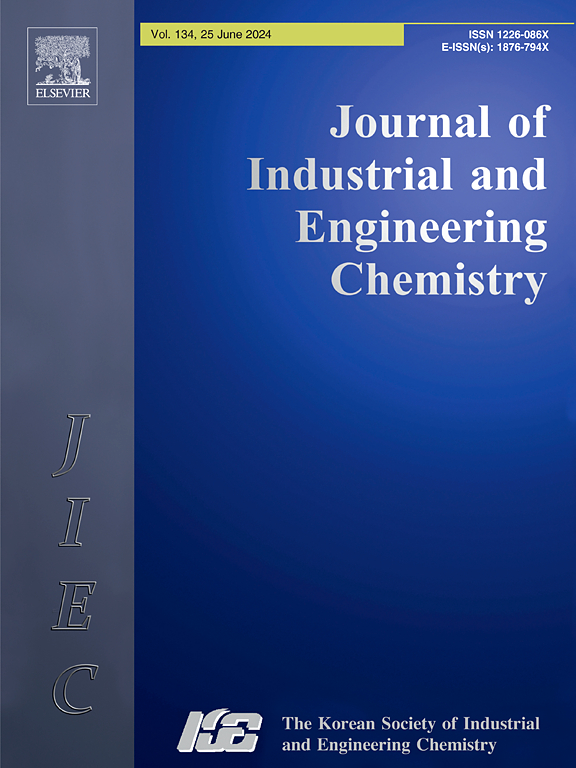Progressive innovations in essential oil and their inlaid air filters for bioaerosol control: A review on future outlook
IF 5.9
3区 工程技术
Q1 CHEMISTRY, MULTIDISCIPLINARY
Journal of Industrial and Engineering Chemistry
Pub Date : 2025-01-03
DOI:10.1016/j.jiec.2025.01.002
引用次数: 0
Abstract
Post-COVID-19 pandemic, for the betterment of human health, developing antimicrobial air filters using generally recognized as safe (GRAS) materials is of interest to reduce indoor bioaerosols and airborne pathogens. Essential oil (EO)-incorporated air filters have a standard momentous attention due to their sustainability and non-toxicity. EOs are biocompatible, environmentally friendly, cost-effective, and nature-derived materials. They have a broad spectrum of antibacterial mechanisms that prevent the bacteria from developing resistance. EO-incorporated air filters are alternatives to existing ultraviolet (UV), plasma, and ozone-based air filters that effectively disinfect pathogens without releasing toxic byproducts into the atmosphere. This review focuses on recent advances in EO-integrated air filters and corresponding air-purification systems, followed by the chemical properties of EOs, antimicrobial mechanisms, pathogen inhibition capacities, encapsulation techniques, and related legislation.

用于生物气溶胶控制的精油及其镶嵌式空气过滤器的不断创新:未来展望综述
covid -19大流行后,为了改善人类健康,开发使用公认安全(GRAS)材料的抗菌空气过滤器对于减少室内生物气溶胶和空气传播病原体具有重要意义。含有精油(EO)的空气过滤器因其可持续性和无毒性而受到广泛关注。EOs是生物相容性、环境友好、成本效益高的天然材料。它们具有广泛的抗菌机制,可以防止细菌产生耐药性。含有eo的空气过滤器是现有紫外线(UV),等离子体和臭氧空气过滤器的替代品,可以有效地消毒病原体,而不会将有毒副产品释放到大气中。本文综述了环氧乙烷集成空气过滤器和相应的空气净化系统的最新进展,随后介绍了环氧乙烷的化学性质、抗菌机制、抑菌能力、封装技术和相关立法。
本文章由计算机程序翻译,如有差异,请以英文原文为准。
求助全文
约1分钟内获得全文
求助全文
来源期刊
CiteScore
10.40
自引率
6.60%
发文量
639
审稿时长
29 days
期刊介绍:
Journal of Industrial and Engineering Chemistry is published monthly in English by the Korean Society of Industrial and Engineering Chemistry. JIEC brings together multidisciplinary interests in one journal and is to disseminate information on all aspects of research and development in industrial and engineering chemistry. Contributions in the form of research articles, short communications, notes and reviews are considered for publication. The editors welcome original contributions that have not been and are not to be published elsewhere. Instruction to authors and a manuscript submissions form are printed at the end of each issue. Bulk reprints of individual articles can be ordered. This publication is partially supported by Korea Research Foundation and the Korean Federation of Science and Technology Societies.

 求助内容:
求助内容: 应助结果提醒方式:
应助结果提醒方式:


